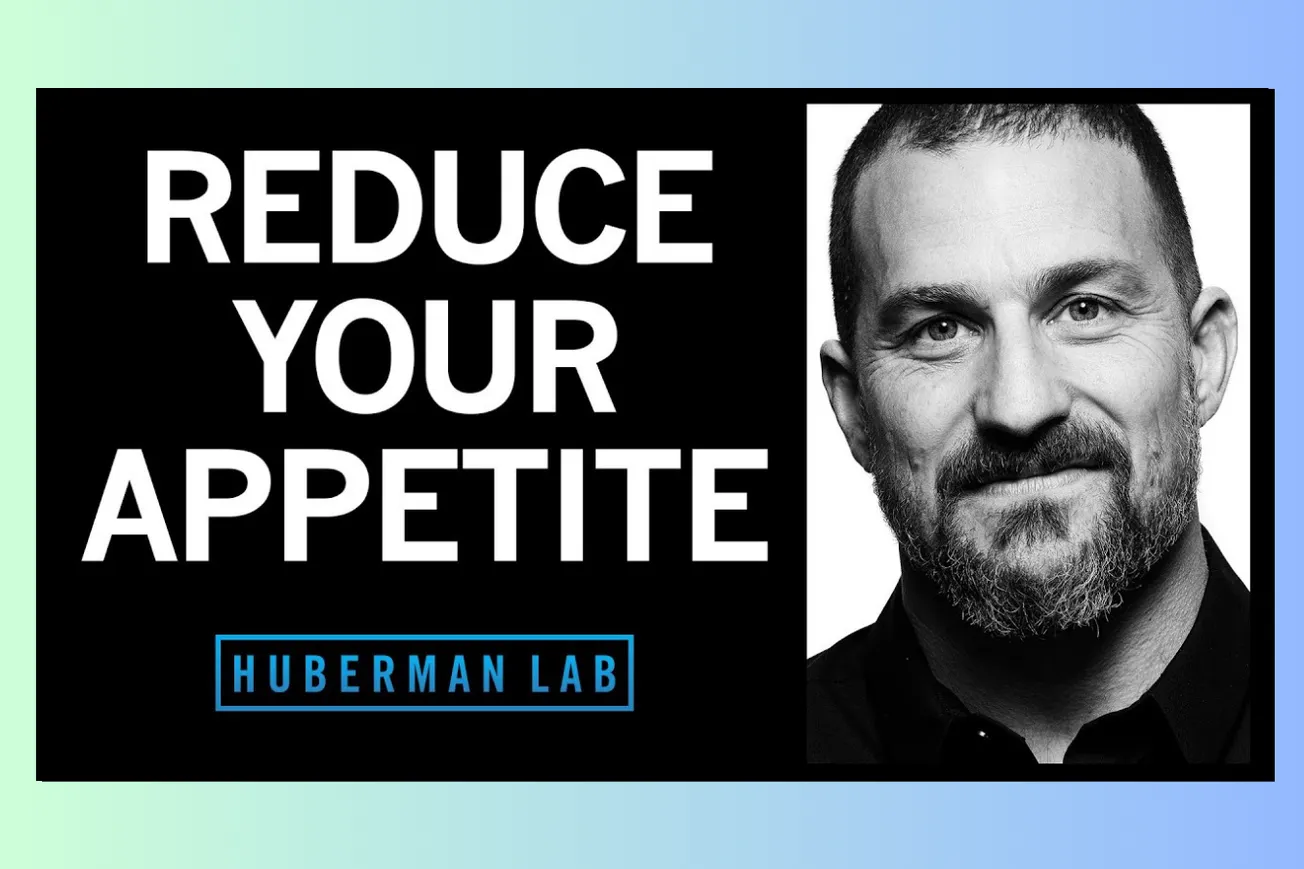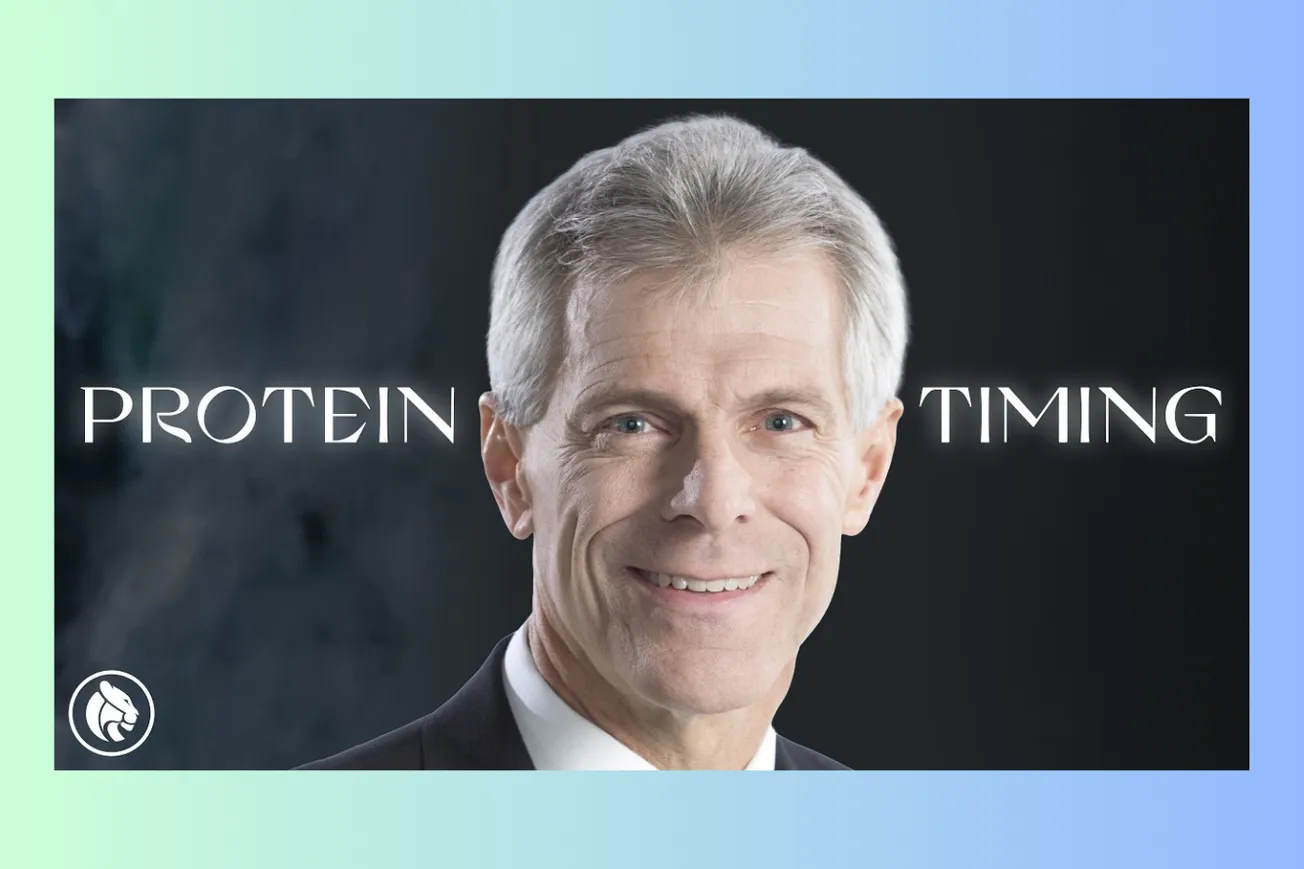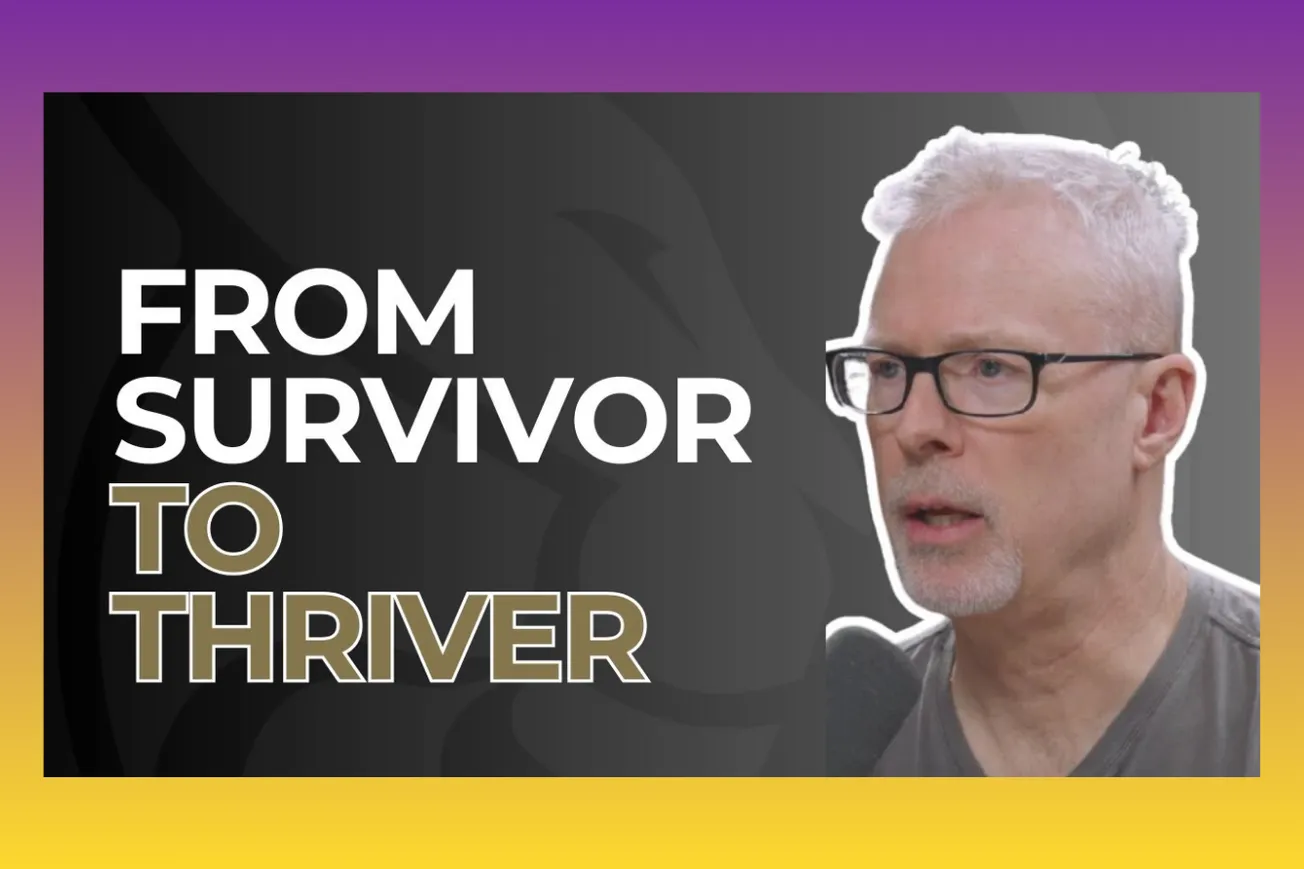Table of Contents
Explore the intricate hormonal and neural mechanisms governing our hunger, eating habits, and feelings of satiety. This Huberman Lab discussion delves into key hormones like ghrelin, CCK, MSH, and insulin, revealing how lifestyle factors like light exposure, meal timing, food quality, and exercise provide actionable control points.
Timeline Overview
- 00:00 - 15:00 — Introduction to the interplay between hormones and the nervous system in controlling hunger and satiety. Discussion of key brain areas: the hypothalamus (ventromedial hypothalamus's paradoxical effects) and the insular cortex (role of food touch/texture). Introduction to the parabiosis experiment revealing blood-borne hunger signals.
- 15:00 - 30:00 — Deep dive into the arcuate nucleus: POMC neurons releasing MSH (Melanocyte-stimulating hormone) to reduce appetite, and AgRP neurons stimulating eating. Explores the crucial link between UV light exposure to the eyes and MSH release, impacting seasonal appetite changes. Discussion of ghrelin as a hunger-stimulating hormone tied to meal schedules and blood glucose.
- 30:00 - 45:00 — Focus on CCK (Cholecystokinin) as a powerful satiety hormone released by the gut. Details how specific nutrients trigger CCK: omega-3 fatty acids, CLA, and essential amino acids, particularly glutamine. Explanation of how the body forages for these specific nutrients. Discussion on the detrimental effects of highly processed foods and emulsifiers, which damage the gut lining, impair nutrient sensing, and disrupt satiety signals like CCK.
- 45:00 - 1:00:00 — Examination of insulin and glucose management. Explanation of insulin's role, blood glucose ranges (hypoglycemic, hyperglycemic, euglycemic), and the dangers of high glucose. Discusses glucagon's role in mobilizing stored energy. Details how food order impacts glucose spikes (eating fiber/protein before carbs blunts the spike). Explores the powerful effect of movement (pre-, during, post-meal) on glucose control via GLUT4 and glycogen storage. Brief overview of LDL/HDL cholesterol and their link to hormone production and glucose management.
- 1:00:00 - 1:15:00 — Discussion of supplements and drugs impacting glucose and appetite. Focus on Metformin (prescription) and Berberine (supplement) mimicking each other's potent glucose-lowering effects via the AMPK pathway, with potential side effects. Mentions other supplements with minor effects (Chromium, L-carnitine, magnesium, acids like vinegar/lemon juice, caffeine's slight glucose increase). Brief mention of the ketogenic diet's effect on blood glucose.
- 1:15:00 - End — Introduction to Yerba Mate and its unique properties: increasing GLP1 (Glucagon-like peptide 1) which helps regulate blood sugar and suppress appetite, and providing electrolytes. Anecdotal benefits for extending fasting windows. Final recap of key hormones (ghrelin, MSH, CCK), lifestyle factors, and the importance of nutrient sensing. Mention of future topics like thyroid hormone. Podcast support information.
Key Takeaways
- Hunger and satiety are actively controlled by a complex interplay between hormones (like ghrelin, MSH, CCK, insulin) and specific brain areas (hypothalamus, insular cortex, arcuate nucleus).
- Melanocyte-stimulating hormone (MSH), a key satiety signal, is stimulated by UV light exposure to the eyes, explaining why appetite can decrease with more sunlight.
- Ghrelin acts like a hormonal clock, triggering hunger based on your established meal schedule and low glucose levels; this schedule can be gradually shifted.
- The gut releases CCK to signal fullness, primarily triggered by sensing sufficient intake of specific fatty acids (Omega-3s, CLA) and essential amino acids (like glutamine).
- Highly processed foods contain emulsifiers that damage the gut lining, impairing the ability to sense nutrients and send satiety signals like CCK, often leading to overeating.
- Managing blood glucose is crucial; the order you eat macronutrients (fiber/protein before carbs) and physical activity around meals significantly impacts glucose spikes.
- Supplements like Berberine (and the drug Metformin) potently lower blood glucose via the AMPK pathway, but require caution due to potential side effects.
- Yerba Mate tea can aid appetite control and blood sugar regulation partly by increasing GLP1, a glucagon-like peptide.
Brain Centers for Hunger & Satiety
- The hypothalamus, specifically the ventromedial hypothalamus (VMH), is a critical control center. Early research showed conflicting results where damage could cause either excessive eating (hyperphagia) or complete loss of appetite (anorexia), indicating it houses distinct neuronal populations controlling both drives.
- The insular cortex plays a significant role by processing internal body sensations (interoception) and receiving input about the touch and texture of food in the mouth. This explains why the physical sensation of chewing or the consistency of foods (like the dislike some have for sea urchin texture) strongly influences our desire to eat or stop eating.
- A key discovery is the arcuate nucleus within the hypothalamus. This area contains specific neuron groups crucial for appetite regulation:
- POMC neurons (Proopiomelanocortin neurons): These act as a brake on eating.
- AgRP neurons (Agouti-related peptide neurons): These act as an accelerator, powerfully stimulating the drive to eat.
- The sensation of chewing itself, detached from caloric intake (like chewing sugar-free gum or celery), activates the insular cortex and can be pleasurable for some, without necessarily driving further hunger, unlike chewing sugary items.
- Understanding these brain regions highlights that hunger isn't just a simple stomach feeling, but a complex process integrated with sensory input, hormonal signals, and learned associations, originating from distinct neural control centers.
Key Hormones Signaling Satiety (The Brakes)
- Melanocyte-stimulating hormone (MSH), specifically Alpha-MSH, is a powerful appetite suppressant. It's released by POMC neurons in the arcuate nucleus and acts via the pituitary gland. Its release reduces the desire to eat.
- Crucially, MSH release is stimulated by ultraviolet (UV) light reaching the eyes. This mechanism helps explain why appetite often decreases during sunnier spring and summer months. Getting adequate daylight exposure throughout the day helps maintain healthy MSH levels and appetite control.
- "This is yet another reason why getting ample light, ideally sunlight... to the eyes, stimulates MSH... And keeps the desire to eat or appetite in check, in healthy ranges."
- Cholecystokinin (CCK) is released from the gastrointestinal tract and potently signals satiety. Its release is triggered when specialized gut neurons and the gut lining detect sufficient amounts of specific nutrients.
- The primary triggers for CCK release are certain fatty acids (Omega-3s, Conjugated Linoleic Acid - CLA) and specific amino acids (essential amino acids, notably glutamine). Your body subconsciously drives you to eat until it senses adequate levels of these vital nutrients, at which point CCK signals fullness.
- Glutamine, besides triggering CCK, has additional benefits like potentially bolstering the immune system and, notably, reducing sugar cravings. This makes ensuring adequate glutamine intake (from food or supplements, used cautiously) a potential strategy for managing appetite and cravings.
- Leptin is another satiety hormone, released by body fat itself. It signals to the brain about overall energy stores. While crucial, its use as an anti-obesity drug in humans has been less effective than initially hoped, unlike in animal models. Yerba Mate tea has been shown to increase leptin levels.
Key Hormones Signaling Hunger (The Accelerators)
- Ghrelin is a primary hormone signaling hunger, released mainly from the GI tract when glucose levels are low or, significantly, in anticipation of your usual meal times. It acts like a hormonal clock tied to your eating schedule.
- "Ghrelin is sort of like a clock, a hormonal clock that makes you want to eat at particular times."
- Ghrelin works by stimulating the AgRP neurons in the arcuate nucleus. Activating these neurons dramatically increases the drive to eat, explaining the heightened anticipation or even anxiety some feel before a meal, especially when very hungry or deviating from their schedule.
- The link between ghrelin and meal timing explains why shifting your eating schedule can be initially difficult. If you regularly eat at certain times, ghrelin release becomes conditioned to those times, causing hunger pangs even if physiologically unnecessary.
- This ghrelin-based hunger schedule can be retrained. Gradually shifting meal times by about 45-60 minutes per day allows the underlying neural circuits to adapt through neuroplasticity, making schedule changes more manageable over several days. Alternatively, varying meal skipping (like skipping a different meal each day) can keep the ghrelin system "off-kilter," potentially increasing flexibility.
The Critical Role of Insulin and Glucose Management
- Insulin is essential for managing blood glucose (sugar) after eating. It helps shuttle glucose from the bloodstream into tissues for energy or storage and prevents levels from becoming dangerously high (hyperglycemia), which can damage neurons over time.
- Glucose levels ideally stay within a healthy range ("euglycemia," roughly 70-100 ng/dL). When levels drop too low ("hypoglycemia"), ghrelin is released, signaling hunger. Glucagon is another hormone that acts counter to insulin, mobilizing stored energy (glycogen from liver/muscles) when glucose is low.
- The order in which you eat macronutrients significantly impacts the speed and height of your glucose spike. Eating carbohydrates (like rice or bread) first causes a rapid spike, which can paradoxically increase hunger further.
- Eating fibrous vegetables or protein first before carbohydrates blunts the subsequent glucose spike, leading to a more gradual rise and promoting satiety earlier in the meal. This is a simple behavioral tool to manage glucose response.
- Physical activity powerfully influences glucose management. Exercising before a meal improves insulin sensitivity and dampens the glucose spike. Even a brief walk (e.g., 30 minutes) after a meal helps control glucose levels by stimulating GLUT4, which helps move glucose into muscle and glycogen stores instead of fat stores.
- Proper glucose management also positively influences LDL ("bad") and HDL ("good") cholesterol ratios. Healthy HDL levels are vital because HDL transports fats/cholesterol to organs like the liver, adrenals, ovaries, and testes, which need them to produce essential hormones (cortisol, estrogen, testosterone). Poor glucose control can negatively impact these lipid ratios.
Lifestyle Factors: Light, Meal Timing & Exercise
- Light Exposure: Getting sufficient UV light (ideally sunlight) exposure to your eyes throughout the day is crucial not just for circadian rhythm but also for appetite control. It stimulates the release of MSH, a key satiety hormone, helping to keep hunger in check naturally, especially during brighter months. Avoid blocking this light with sunglasses constantly or blue blockers during the day.
- Meal Timing & Ghrelin: Your body adapts to your eating schedule via the hormone ghrelin. Eating at regular times means ghrelin will spike predictably just before those times, causing hunger. To change your schedule (e.g., adopt intermittent fasting), shift meal times gradually (approx. 45-60 mins per day) to allow the ghrelin system and associated neural circuits to adapt comfortably.
- Exercise & Glucose Control: Regular movement is paramount for managing blood glucose.
- Zone 2 Cardio (steady-state, 30-60 mins, 3-4 times/week) improves overall blood sugar stability and insulin sensitivity.
- High-Intensity Interval Training (HIIT) & Resistance Training are effective at depleting glycogen stores and stimulating pathways that encourage glucose to be stored back in muscles and liver, rather than as fat. They also boost basal metabolic rate even after the workout.
- Even light activity like walking shortly after a meal helps blunt glucose spikes.
Dietary Villains & Heroes: Processed Foods, Emulsifiers, and Nutrient Sensing
- Your body is subconsciously "foraging" for essential nutrients, particularly specific fatty acids (Omega-3s, CLA) and amino acids (like glutamine). Reaching adequate levels triggers satiety hormones like CCK. Ensuring your diet provides these can naturally help regulate appetite.
- Highly processed foods often contain emulsifiers (like soy lecithin) used to extend shelf life. These are detrimental because they act like detergents in your gut, stripping away the protective mucosal lining.
- This damage hinders the ability of gut neurons to properly sense the nutrients you've consumed.
- As a result, satiety signals like CCK are not adequately deployed, leading you to feel less full and promoting overconsumption, even of other foods later on.
- "Emulsifiers from highly processed foods are limiting your guts ability to detect what's in the foods you eat and therefore to deploy the satiety signals... that shut down hunger."
- Processed foods also frequently contain hidden sugars that you might not even taste. These sugars cause rapid glucose spikes and trigger dopamine release via the gut-brain axis (vagus nerve), further increasing cravings and driving you to eat more.
- The combined effect means processed foods actively work against your body's natural appetite regulation systems, making adherence to healthy eating difficult. A calorie from processed food is not the same as a calorie from whole food due to these disruptive effects on gut health and hormonal signaling. Prioritizing whole, unprocessed foods supports proper gut function and satiety signaling.
Supplements & Compounds Influencing Appetite/Glucose
- Metformin (Prescription) & Berberine (Supplement): Both potently lower blood glucose by activating the AMPK pathway and increasing insulin sensitivity, with Berberine's effects closely mimicking Metformin. They are effective but should be used cautiously, especially by non-diabetics, due to the risk of hypoglycemia and potential side effects (like headaches reported with Berberine). Start with very low doses if exploring under medical guidance.
- Yerba Mate: This caffeinated tea uniquely increases GLP-1 (Glucagon-like peptide 1), which aids in blood sugar regulation (keeping it stable) and acts as an appetite suppressant. It also provides electrolytes. This combination can be helpful for managing hunger, particularly during fasting periods. Brew with water just below boiling to reduce bitterness.
- Glutamine: This amino acid triggers CCK release (promoting satiety) and can specifically reduce sugar cravings. It can be obtained from foods (like cottage cheese) or supplemented, but caution is advised regarding potential slight blood sugar increases and for individuals with cancer predispositions.
- Acids (Vinegar, Lemon/Lime Juice): Consuming acidic substances can slightly blunt blood glucose spikes, potentially by altering gut pH and food absorption speed. A small amount of lemon juice in water might help mitigate feeling "over-sugared."
- Other Minor Modulators:
- Lowering Glucose: Chromium (minor), L-Carnitine, Magnesium, Zinc, Capsaicin (chili peppers), Stevia (slight effect, gut impact unclear).
- Increasing Glucose: Caffeine (slight increase), Vitamin B3.
Your feelings of hunger and fullness are orchestrated by a dynamic conversation between your gut, hormones, and brain, heavily influenced by nutrient quality and lifestyle choices. By understanding these mechanisms—prioritizing whole foods, managing light exposure, optimizing meal timing and exercise, and being aware of disruptive agents like emulsifiers—you gain actionable pathways to better regulate your appetite and metabolic health.









